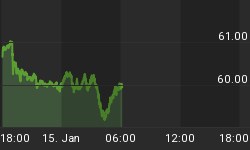Currency Debasement and Price Stability Risks

Despite the small moves in exchange rates between the U.S. dollar and the euro, confidence and trust has been debased. Looking forward to 2012, we see that deflation is becoming a rising danger. After the decay in 2011 that has hammered confidence in the euro, the need to issue more and more 'new' money is growing. The Eurozone is moving into recession (if it is not already in one). The Eurozone is more than likely to lose one or more of its weaker members -this will be good for the euro itself though--so liquidity shortages may force more money supply growth already exceptionally high in many countries.
Despite the 40-year long campaign to prevent gold from returning to any active role in the developed world's monetary system, gold remains the only universally-accepted currency whose supply cannot be increased by policy-makers. The equivalent of money issuance for gold is new mine production, which has been on a relatively flat trend for the past ten years.
Shortage of Gold in Monetary System Relative to Amount of Money
In a recent report, the World Gold Council examined the quantitative relationship between money supply and gold. Data showed that a 1% change in US money supply growth six months prior has an impact of 0.9% on the price of gold, on average. Meanwhile a 1% change in money supply in India and Europe six months prior affects the price of gold by 0.7% and 0.5% respectively.

So gold, whether accepted or recognized by 'official' bodies, has a role in money, and this role is growing as the real value of currencies declines in terms of trust and confidence. For gold to do an effective job of restoring confidence and trust, its value has to relate to the global supply of money (i.e. financial assets). Take a look at the first pie chart (thanks to BMG/WGC and McKinsey) showing the value of gold verses the world's financial assets. We leave it to you to estimate the growth of the gold price so that the value of gold closely relates to the value of global financial assets.
A multiplication of 10 to the gold price would fall short of this figure!
Percentage of Gold in Reserves

So often the percentage of gold in reserves is used as a measure of how much gold should there be in the reserves. But in the context of the amount of money there is out there, this number is meaningless. We looked at the traditional use of gold in reserves and found the measure was 3-months worth of international trade, as though this is all it would take to resolve any crisis. Where on earth was that formula concocted from?
If we look back to the days when the developed world accumulated the reserves they're now thought to have and the amount of money on issue, a more pertinent number would be the percentage of money, gold, at current prices, represents in reserves. The two, relevant points in this valuation of gold would be when gold was a basis of the world's monetary system (before the Second World War) and then in the 1960's under the Bretton Woods system, just before it was effectively torpedoed.
It quickly becomes clear that this percentage has been dropping heavily as total money has expanded. For gold to function, as it used to, something has to change. Either the amount of gold in foreign exchange reserves has to increase, or the price of gold in each currency has to rise to compensate for the increase in total money, or a combination of both. Even with a massive hike in the price of gold, two problems will still persist:
- There is not enough gold in 'official' national reserves the world over.
Member's only:
Percentage of Gold in Reserves (cont.)
After more than a year's delay and frustrations we are informed that there is now an entity that whose objective is to counter any attempt to confiscate citizen's gold that is soon to launch. We will be informing Subscribers about this.
Get the rest of the report. Subscribe @
www.GoldForecaster.com / www.SilverForecaster.com
















